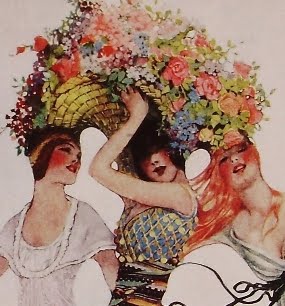As a mother of two small children and as a beneficiary of a childhood spent on a large farm in the country, I realize the importance of fostering a close connection between my children and the natural environment. Because of this strong belief in maintaining the connection with nature, I guide my children there and foster their love for natural places. We regularly spend days at the beach, we go hiking, we have favorite picnic spots on rivers, we swim in alpine lakes, we camp often, we participate in a nature club with a group of friends where we regularly go to wild places, and we go backpacking in the wilderness. Many of our friends enjoy similar experiences, but, alas, this is not the norm.
In his book, "Last Child in the Woods: Saving our Children from Nature-Deficit Disorder," Richard Louv laments that:
our society is teaching young people to avoid direct experience in nature. That lesson is delivered in schools, families, even organizations devoted to the outdoors, and codified into the legal and regulatory structures of many of our communities. Our institutions, urban/suburban design, and cultural attitudes unconsciously associate nature with doom-- while dissociating the outdoors from joy and solitude. Well-meaning public-school systems, media, and parents are effectively scaring children straight out of the woods and fields.
It is important that we care about and rebel against this trend because:
at the very moment that the bond is breaking between the young and the natural world, a growing body of research links our mental, physical and spiritual health directly to our association with nature-- in positive ways. Several of these studies suggest that thoughtful exposure of youngsters to nature can even be a powerful form of therapy for attention-deficit disorders and other maladies. As one scientist puts it, we can now assume that just as children need good nutrition and adequate sleep, they very well need contact with nature.
Indeed, in the most nature-deprived parts of our societies, we can see the rise of what might be called a cultural autism with symptoms including tunneled senses and feelings of isolation and containment. This has clearly been the trend with the wide-ranging worship of the secondary experience offered by technology: television, computers, cell phones, internet "socializing," or video games. But where do we achieve "primary experience"-- that which we can see, feel, taste, hear, or smell for ourselves? In our modern "machine culture," it is shockingly lacking.
North Carolina State University professor Robin Moore directs a research and design program that promotes the natural environment in the daily lives of children. According to Moore:
Children live through their senses. Sensory experiences link the child's exterior world with their interior, hidden affective world. Since the natural environment is the principle source of sensory stimulation, freedom to explore and play with the outdoor environment through the senses in their own space and time is essential for healthy development of an interior life.
We all love our children, and so many of us spend great amounts of time and money to purchase our children computers for learning or sign them up for classes and organized sports. We are literally running from the moment we awaken. And so are our children... Is there a better way? I remember spending hours sitting in the river catching crawdads, tadpoles or frogs. I could be "lost" for hours with the baby animals born on our ranch. Or I could walk for miles looking for rocks and arrowheads. I'd trade a computer for these experiences any day.
Yet it is not so easy anymore for us increasingly growing masses of urban folk. So what can we do? Louv offers a great list of 100 actions we can take in his companion field guide. The following are a few of my favorite:
- Send your kids outside to play in the dirt.
- Invite native flora and fauna into your life by replacing part of your lawn with native plants and maintaining a birdbath in your garden.
- Regularly visit nature as an antidote to stress.
- Tell your children stories about your special childhood places in nature.
- Make the "green hour" a new family tradition (www.greenhour.org), a time for unstructured play and interaction with the natural world.
- Go for a hike!
- Invent your own nature game.
- Keep a "wonder bowl" where you can keep all of your children's collected treasures from nature for display.
- Keep a nature journal with your children.
- Go harvesting at local you-pick farms.
We are now building the foundation for our children's adult lives. Richness of experience will help them to build survival skills-- for both in the natural world as well as in the urban jungles. Help them to build these survival skills, and then help them to thrive by regularly taking them outside to engage with the natural world in unstructured wild play.










